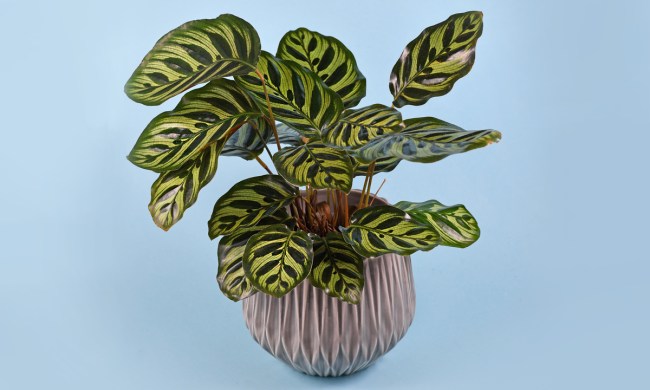Ferns are wonderful plants for filling in shady spots in gardens. They’re soft, fairly low maintenance, and neutral yet classy. It may come as a surprise, but ferns can grow just as well indoors as outdoors! They can bring a soothing touch of green to any shady room, and are particularly well-suited to dorm rooms, offices, and even bathrooms!
If you're interested in learning how to grow ferns indoors then this is the guide for you! We'll answer all your questions, including which ferns grow best indoors, how to care for them, and even what to avoid when caring for your fern.
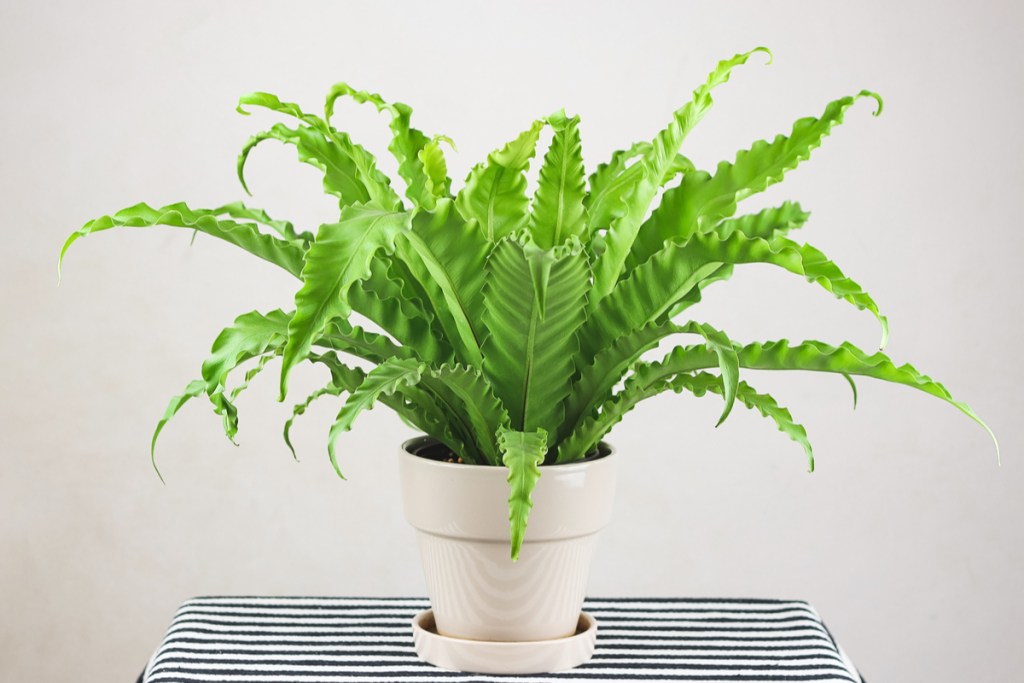
What ferns do best indoors?
There are many different types of ferns, and a decent amount of them will grow indoors. Size is an important consideration. Although some varieties are small and delicate, many can reach a fairly large size. When growing them outside, this is a plus. Inside, though, long fronds can get in the way.
Boston ferns are one of the most common ferns. Also called sword ferns or ladder ferns, they have long fronds that stick out and drape down. These fronds can grow up to 3 feet long, but Boston ferns do grow well indoors with proper humidity.
Bird’s nest ferns have crimped, wave-like fronds that can reach 4 feet in length. However, when grown indoors, they typically only grow to 1 or 2 feet. Bird’s nest fronds don’t hang like other ferns, so they’re a better choice if you don’t want a hanging basket.
If bird’s nest ferns are still too large for you, try a button fern. The name comes from its small size and the rounded shape of its leaflets. Button ferns only grow to between 12 and 18 inches, and they make excellent desk plants.
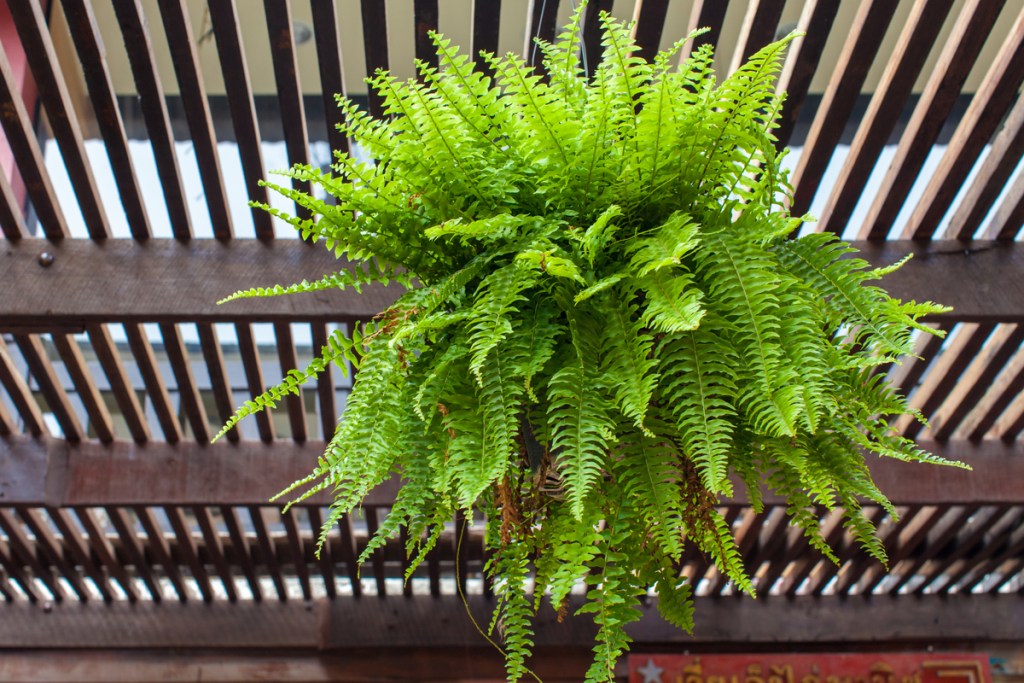
What do ferns need?
Caring for ferns is pretty simple if you think about where they naturally grow. Ferns grow on forest floors, typically in shaded, moist, and humid locations. Recreating these conditions will help ensure your fern has everything it needs. Temperature isn’t often an issue with ferns, as long as you know where your fern is native to. There are tropical ferns, which enjoy more heat and more humidity, and temperate ferns, which prefer warm but mild temperatures.
Here's how to properly care for your indoor fern:
Step 1: Choose a rich, well-draining potting soil.
If you need to, you can mix compost with potting soil to thicken and enrich it. Compost adds nutrients to the soil, replacing the decomposing leaves and plants of the forest, but it also holds water without soaking the plant. Fern roots don’t cope well with standing water, but they do need consistent moisture.
Step 2: Water your fern frequently, but only in small amounts at a time.
You want to keep the soil moist but not drenched.
Step 3: Keep the humidity high.
This can be an issue with indoor ferns in particular, since people often work to make their homes less humid. Keeping a spray bottle of water handy to lightly mist the ferns if they dry out can help. Adding a humidifier to the room can also be useful.
Step 4: Place your fern where it will receive filtered light throughout the day or morning sun and afternoon shade.
In most cases, placing a sheer curtain over your window is the best option. However, if nowhere in your house is suitable, you can get away with moving your fern throughout the day, giving them morning sun and afternoon shade. The key thing to takeaway is that ferns need a mix of light and shade. Too little light can stunt their growth, but too much can burn them. It may take a little trial and error to find the best place in your home for your fern.
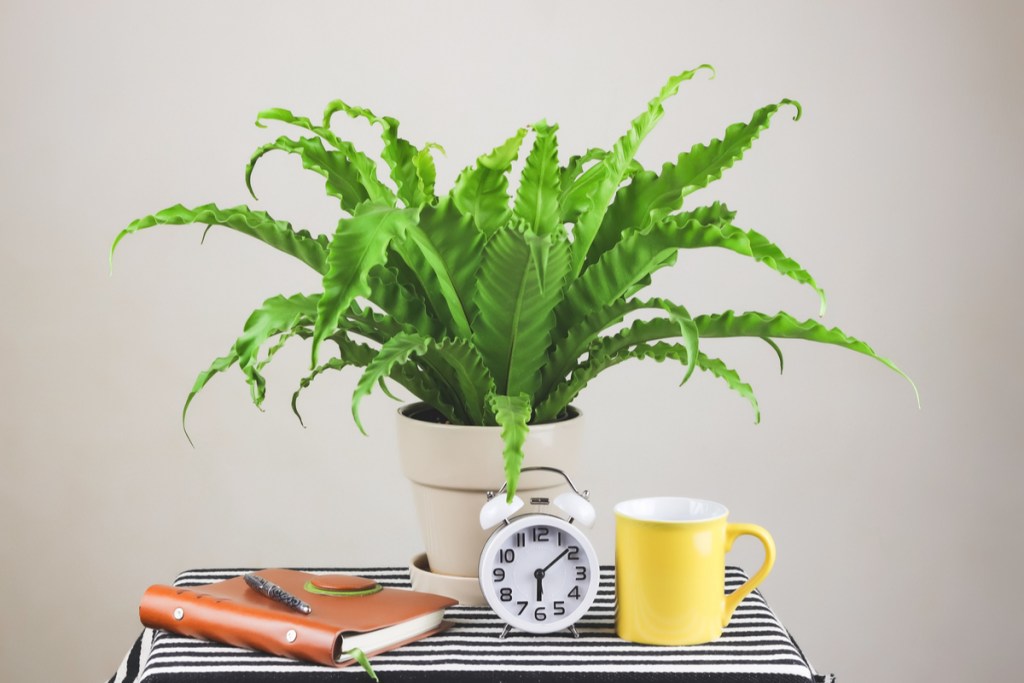
Are ferns prone to any pests or diseases?
Ferns are relatively healthy plants, and, thankfully, pests are less common indoors than they are outside. However, there are a few problems you can look out for.
The two most common problems are:
- Leaf tip burn - Browning at the edges of leaves and fronds. It is caused by overfertilization, but is easy to mistake for a sunburn. Sunburns are typically larger, spreading across an entire section of the plant, while leaf tip burn is only around the edges and tips.
- Fungal infections - Mushrooms and molds that grow in the soil and on the plant. It is caused by overwatering when fungal spores are present. Ferns are especially prone to fungi since they enjoy damp soil.
Here's how to avoid these problems:
Step 1: Follow fertilizer instructions carefully.
Fertilizers will come with instructions explaining how often to use them, how much to use at a time, and any special safety instructions you should know. Read these carefully to avoid overfertilization.
Step 2: Use a liquid fertilizer.
Any unabsorbed nutrients and salts can build up in your plant's soil, which can contribute to overfertilization. Liquid fertilizers typically have fewer sales and stay in the soil for a shorter amount of time. However, overfertilization can still become an issue, so make sure you're reading all the instructions carefully!
Step 3: Get your plant and potting soil from a reputable source to reduce the risk of fungal spores already being in the soil.
Step 4: Sterilize your soil before using it.
This involves using heat to kill any pests, fungal spores, and bacteria that may be in the soil.
Step 5: Water your fern below the leaf level.
Wet leaves increase the risk of fungal infections. This is partly because consistently wet leaves can rot, giving any fungi or bacteria around a food source, and partly because spores can collect on leaves and begin growing when exposed to water.

What not to do when caring for a fern
The main thing to avoid when caring for an indoor fern is letting it dry out. A dry fern is an unhappy, unhealthy fern. In many cases, you’ll see the fronds turning gray and even falling off. If regular watering is a challenge for you for any reason, but your heart is still set on a fern, try a lady fern, goldenback fern, or Korean rock fern. Setting up an automatic watering system is also an option to consider.
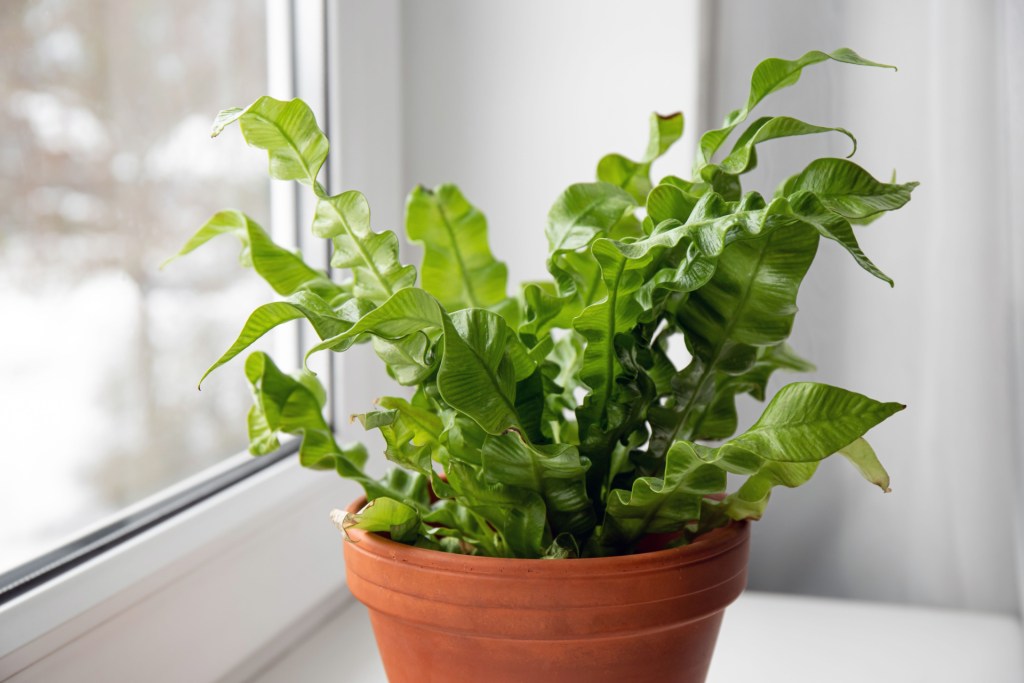
Where is the best location for your indoor fern?
While ferns can be grown in many places throughout your house, choosing the best location for your fern will help it thrive. As we've already discussed, light and humidity are important for proper fern care. A window that faces North or East or has a light curtain over it are ideal, but you can also use a grow light. If you're keeping your fern in a room with poor natural light, such as a dark office or dorm room, then place it in the sunniest position possible.
Keeping your fern in your bathroom, or moving it there occasionally, can help provide extra humidity. The steam from a hot shower can help your fern perk up. Additionally, keep your fern away from drafts. Cold, drafty windows in the window and air conditioning vents in the summer can impact both the humidity and the temperature of the air around your fern. This can lead to them becoming too dry and cold, which makes them more vulnerable to pests and diseases.
If you have a cat, placing your fern somewhere the cat can't get to is a good idea. While most ferns are not toxic to cats, they aren't the most resilient plant. Being knocked to the ground too often can stress your fern out enough to impact its health.
Ferns can add a touch of greenery to almost any corner of your home. Now that you know how to grow ferns indoors, you can have a house full of lush, low maintenance greenery. Whether you want to turn your home into a rainforest or are just looking for a desk plant that won’t die in the shade, ferns might be the answer you’re looking for.


